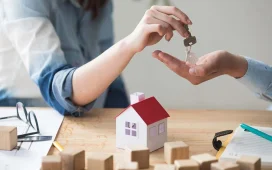In today’s world, the importance of sustainability and environmental conservation cannot be overstated. As individuals become more conscious of their impact on the planet, the role of home design in promoting sustainable lifestyles has gained significant traction. Sustainable home design not only minimizes negative environmental impacts but also enhances the health and well-being of the occupants. Let’s explore how home design can play a crucial role in fostering sustainable living.

1. Energy Efficiency
One of the key aspects of sustainable home design is energy efficiency. By incorporating energy-saving features such as solar panels, energy-efficient appliances, and proper insulation, homeowners can significantly reduce their energy consumption and carbon footprint. Energy-efficient homes not only lower utility bills but also contribute to a greener environment by reducing reliance on fossil fuels.
2. Use of Sustainable Materials
Another important factor in sustainable home design is the use of eco-friendly and sustainable materials. Opting for materials like bamboo flooring, reclaimed wood, recycled glass, and low-VOC paints can help reduce the environmental impact of construction and promote a healthier indoor environment. Sustainable materials are not only durable and long-lasting but also support responsible sourcing practices.
3. Water Conservation
Water is a precious resource, and sustainable home design emphasizes the importance of water conservation. Installing water-saving fixtures such as low-flow toilets, faucets, and showerheads can significantly reduce water usage in a household. Additionally, implementing rainwater harvesting systems and xeriscaping techniques can help homeowners minimize water wastage and maintain a lush, sustainable landscape.
4. Passive Design Strategies
Passive design strategies are integral to sustainable home design as they maximize natural light, ventilation, and thermal comfort without relying on mechanical systems. Features like large windows for natural daylighting, cross ventilation for improved airflow, and strategic placement of trees for shading can enhance the energy efficiency and overall comfort of a home while reducing the need for artificial heating and cooling.
5. Sustainable Landscaping
Home design extends beyond the walls of a house to include the surrounding landscape. Sustainable landscaping practices such as native plantings, permeable paving, and composting can help create an eco-friendly outdoor space that supports biodiversity and soil health. By incorporating sustainable landscaping elements, homeowners can reduce water usage, minimize chemical inputs, and create a vibrant, sustainable ecosystem around their homes.
In conclusion, home design plays a pivotal role in promoting sustainable lifestyles by incorporating energy-efficient features, using sustainable materials, conserving water, implementing passive design strategies, and embracing sustainable landscaping practices. By adopting sustainable design principles, homeowners can not only reduce their environmental impact but also create healthier, more resilient living spaces that support a sustainable future for generations to come.
















